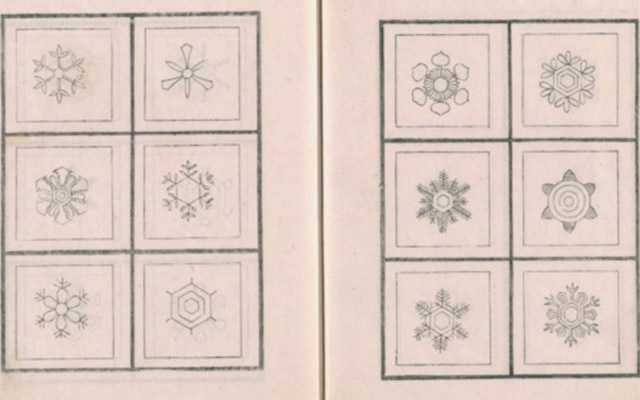
We’ve all heard the old adage, “No two snowflakes are alike.” While the saying may be old, this book from Edo era Japan—featuring 86 drawings of snow crystals—may be older.
In 1832, Doi Toshitsura, the feudal lord of what is now Ibaraki Prefecture, publicly released his findings of 20 years of researching snow flakes and crystals.
The 86 different crystalline shapes were recorded in a book entitled Sekkazusetsu (“illustrations of snow flowers”). The book is now available online through the National Diet Library Digital Collection.
Let us remind you however, this was done in 1832. While the microscope was invented in the 17th century, keep in mind that Japan was still in isolation until 1868. Doi specially imported his microscope from the Netherlands, the one country that Japan was willing to trade with at the time, to study these beautiful specs.
Even though the technology of those first microscopes are far inferior compared to what we have now, many of the drawings in this book are as detailed as scientists could make today. Pretty impressive for the 19th century!
In addition to the drawings of the different snow crystals are directions of how to best collect specimen.
1. On a winter night that seems like it may snow, take a dark cloth outside to chill.
2. Let the snowflakes fall on the cloth.
3. Use tweezers to very carefully transport individual crystals to the middle of a dark lacquered plate.
4. Observe it under the microscope.
If you’re interested in doing your own snow crystal observations, these directions could be valuable to you too. Plus, with our current technology, microscopes are commercially available, so you could even make your own snow crystal book and compare it to Sekkazusetsu!
Back to that common saying, we have a feeling that Doi too started to realize that no two snowflakes are alike, because in 1940, a second edition of the book was published with an additional 97 crystal varieties!
If you’re interested in looking more closely at the different drawings, head to the National Diet Library Digital Collection.
Source: Grape
Images: National Diet Library Digital Collection